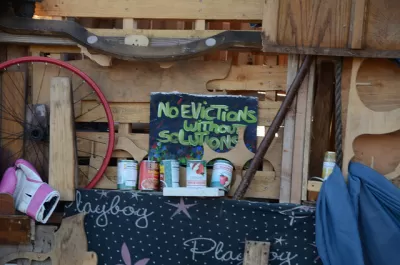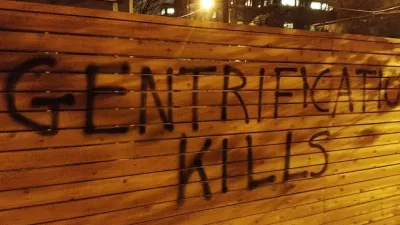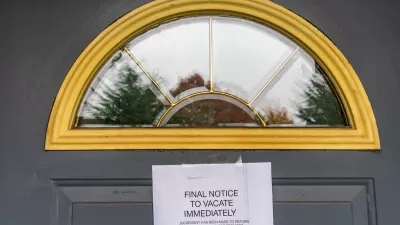About 500,000 tenants face eviction every year—triple previous estimates. And over a million may be involuntary displaced despite never making it to court.

Evictions in California are three times more common than previously thought, according to a new report by statewide renter organization Tenants Together. Using previously unpublished data from the state Judicial Council, the organization found that an average of 166,337 households, averaging 2.9 residents each, received unlawful detainers every year for the last three years.
The analysis also found that, contrary to common belief, "eviction court cases move through the system at breakneck speed." While other civil cases can take years to resolve, state records show that 75 percent of eviction cases are decided within 45 days, and nearly 60 percent within a month.
The data is broken down by county in Tenants Together's report, California Evictions are Fast and Frequent, and visualized in an interactive map by the Anti-Eviction Mapping Project. The report helps fill in the gaps from national data released by the Eviction Lab, led by sociologist Matthew Desmond—which identified only 43,000 evictions in the state last year.
Still, when it comes to displacement, a big piece of the picture is missing: Evictions that occur outside of court. And that may be the majority of cases, the report warns: "For every tenant facing a court filed eviction, there are others displaced from their homes who do not show up in court filing data." The organization estimates that, when all variables are accounted for, over a million tenants might be evicted each year.
FULL STORY: New Tenants Together Report Reveals that Evictions in California are Triple Previous Estimates

Maui's Vacation Rental Debate Turns Ugly
Verbal attacks, misinformation campaigns and fistfights plague a high-stakes debate to convert thousands of vacation rentals into long-term housing.

Planetizen Federal Action Tracker
A weekly monitor of how Trump’s orders and actions are impacting planners and planning in America.

San Francisco Suspends Traffic Calming Amidst Record Deaths
Citing “a challenging fiscal landscape,” the city will cease the program on the heels of 42 traffic deaths, including 24 pedestrians.

Defunct Pittsburgh Power Plant to Become Residential Tower
A decommissioned steam heat plant will be redeveloped into almost 100 affordable housing units.

Trump Prompts Restructuring of Transportation Research Board in “Unprecedented Overreach”
The TRB has eliminated more than half of its committees including those focused on climate, equity, and cities.

Amtrak Rolls Out New Orleans to Alabama “Mardi Gras” Train
The new service will operate morning and evening departures between Mobile and New Orleans.
Urban Design for Planners 1: Software Tools
This six-course series explores essential urban design concepts using open source software and equips planners with the tools they need to participate fully in the urban design process.
Planning for Universal Design
Learn the tools for implementing Universal Design in planning regulations.
Heyer Gruel & Associates PA
JM Goldson LLC
Custer County Colorado
City of Camden Redevelopment Agency
City of Astoria
Transportation Research & Education Center (TREC) at Portland State University
Jefferson Parish Government
Camden Redevelopment Agency
City of Claremont





























